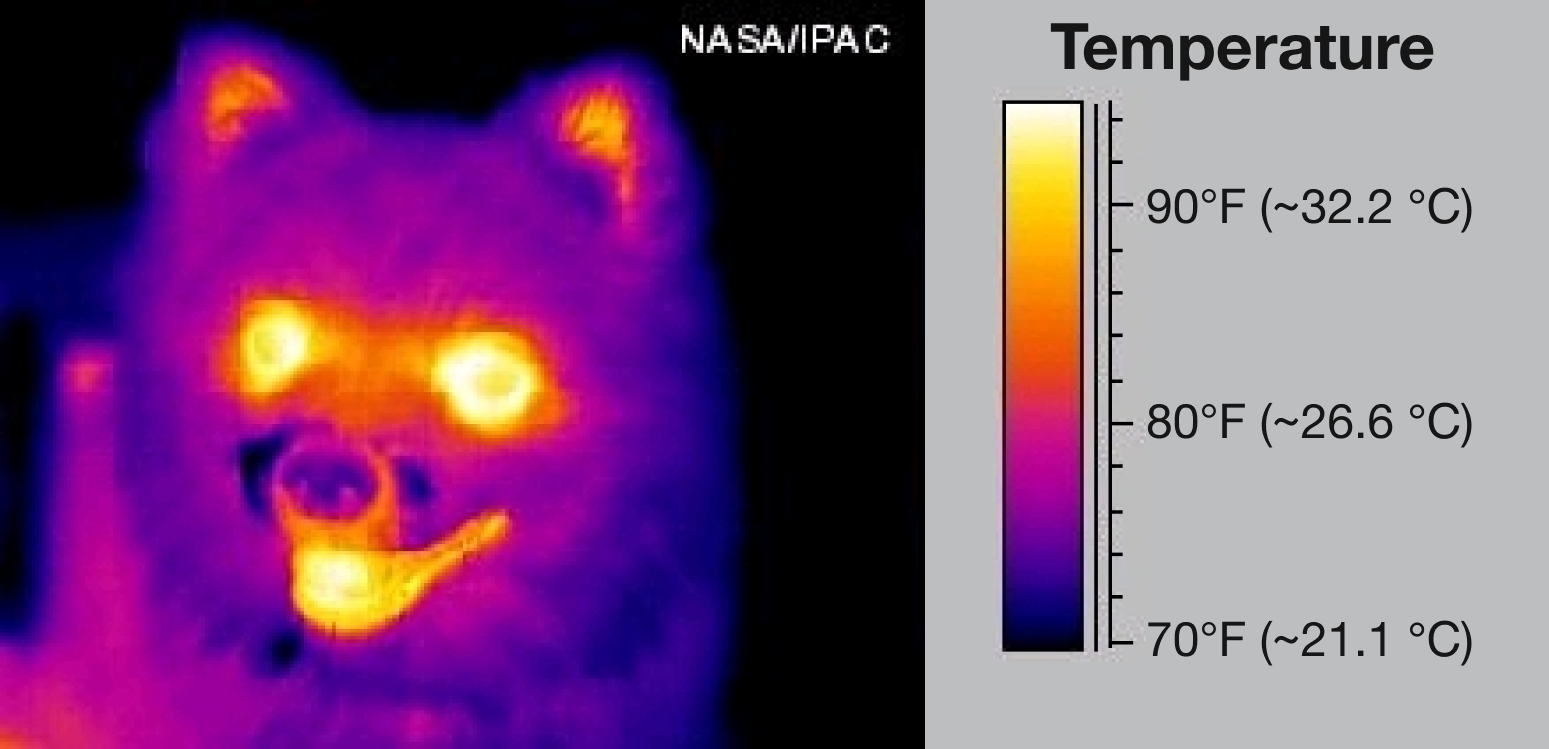Thermographic Dog
A thermographic camera creates images based on infrared radiation.
In this thermographic photograph of a dog, why are the eyes and mouth yellow?
 Courtesy NASA/JPL-Caltech
Courtesy NASA/JPL-Caltech

To learn more about heat, check out the new Heat chapter in the Science Essentials course!
This section requires Javascript.
You are seeing this because something didn't load right. We suggest you, (a) try
refreshing the page, (b) enabling javascript if it is disabled on your browser and,
finally, (c)
loading the
non-javascript version of this page
. We're sorry about the hassle.
Animals like dogs, bears, etc which live in cold countries have a special protective layer on their body. The have a special fluffy like mesh on their body which is known as fur . This fur has many hair and in-between them there are many gaps. These gaps are filled up with air. As you know that air is a bad conductor of heat it will prevent heat from escaping out of the body . Hence the heat generated inside the body will not radiate out into the atmosphere. In this way these animals save themselves from bitter cold climate. But some parts of the body of the dog like mouth, eyes and ears are not covered by this fur . So, there is no obstruction for the heat to radiate out. Hence, heat is lost through these parts and hence in this thermographic photograph of a dog the eyes and mouth are yellow (as yellow indicate a temperature around 3 2 . 2 ∘ C ).
Regarding the comments made by users regarding nose :
An infrared camera detects infrared radiation. For the eyes and mouth to appear yellow as they do in this image, they must be radiating more heat. "The eyes and mouth are not insulated by fur and therefore radiate more heat," is true. If the eyes and mouth were concealed by fur, they would indeed radiate less heat. This is because fur acts an insulator which prevents heat loss. It is also true however, that the nose is not insulated by fur, and yet it is very dark. Dog noses are complicated. Here are some factors that can influence the temperature of a dog's nose. 1. Dogs keep their nose wet by licking it. This promotes heat loss by conduction and evaporation (note: not infrared which would be picked up in a thermographic photo), keeping it colder and thus at a lower temperature; 2. A dog's nose has reduced blood flow. The further the tip of the snout is from the body, the colder it will tend to be.